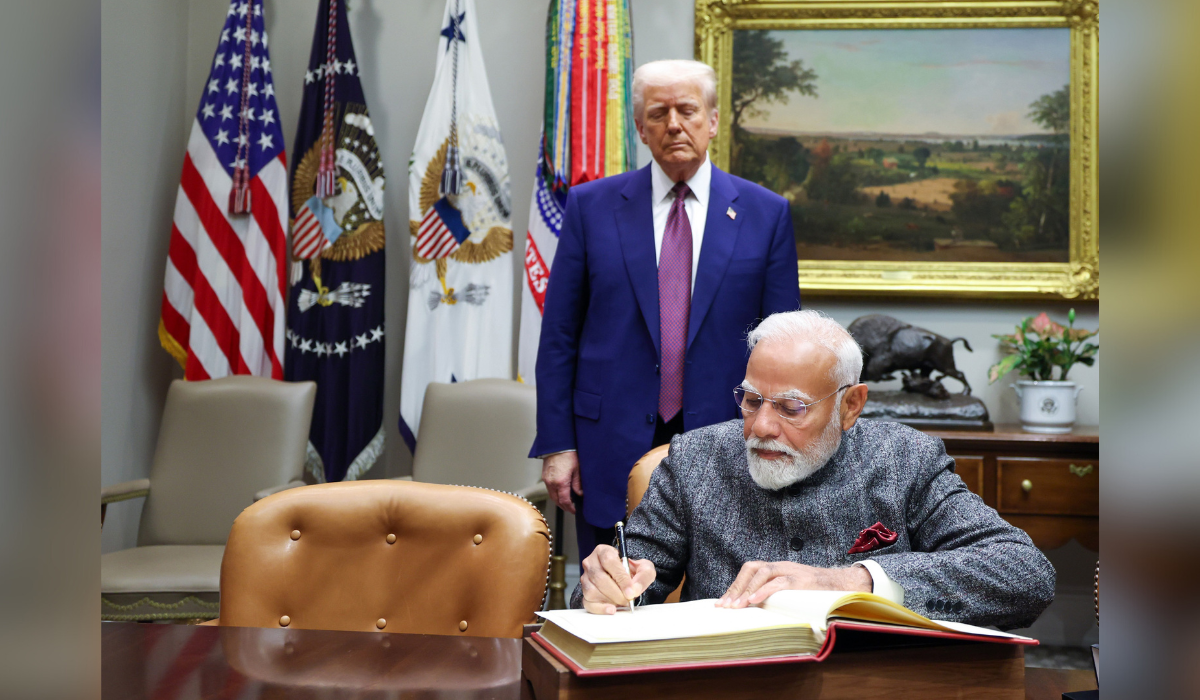President Donald Trump announced on Wednesday that he will impose a 50% tariff on imports from India, citing the country's continued purchases of Russian oil. The move is part of the White House's broader effort to overhaul the international trade order and comes as a response to Russia's military invasion of Ukraine. The tariffs, which will be implemented in two phases, will start with a 25% duty at 12:01 a.m. on Thursday, followed by an additional 25% tax in three weeks. The decision has sparked concerns among U.S. businesses and consumers, who will ultimately bear the cost of the tariffs.
The president's decision has been met with criticism from India, with a spokesman for the country's Ministry of External Affairs calling the move "unfair, unjustified, and unreasonable." India has been one of the largest buyers of Russian crude oil, importing 89 million tons last year, and has also received 36% of its military arms imports from Russia. The country's reliance on Moscow for oil and defense systems has put it in a difficult position, with experts saying that it will be challenging for India to balance its relationships with both the U.S. and Russia. The tariffs have also caused a political headache for Indian Prime Minister Narendra Modi, with the main opposition party painting him as a weak leader who has failed to secure economic benefits for India despite his efforts to befriend Trump.
The tariffs are part of Trump's broader trade policy, which has been marked by a series of sweeping measures aimed at overhauling the international trade order. The president has long argued that imposing taxes on trade will improve the nation's finances and rebalance relationships with countries that he says are taking advantage of the U.S. However, economists have warned that the tariffs could have unintended consequences, including higher prices for consumers and damage to certain alliances that domestic producers have relied on to manufacture cheap goods. U.S. companies, including Apple, have already begun to feel the impact of the tariffs, with the tech giant announcing a $100 billion investment in domestic manufacturing in an attempt to divert production away from countries targeted by Trump's trade war.
The impact of the tariffs on India will be significant, with the country's exports to the U.S. valued at $78.4 billion from January to June. India is also a key player in the BRICS bloc of nations, which includes Brazil, China, and South Africa, and has been a major buyer of Russian oil. The tariffs have sparked concerns among experts that the move could damage the U.S.-India relationship, which has been seen as a key partnership in the region. Richard Rossow, the chair on India and emerging Asia economics at the Center for Strategic and International Studies, said that the U.S. and India have built up a reservoir of goodwill, but that it is being spent rapidly due to the day-to-day antagonism over trade.
The imposition of tariffs on India is also seen as a reflection of Trump's personal stance on Russian oil, with the president having previously stated that he does not care what India does with Russia. However, experts say that the move is likely to have far-reaching consequences, including damaging the U.S.-India relationship and potentially pushing India closer to Russia and China. As the situation continues to unfold, it remains to be seen how India will respond to the tariffs and what the long-term impact will be on the U.S.-India relationship. One thing is certain, however: the tariffs have marked a significant escalation in the trade tensions between the two countries, and it will be important to watch how the situation develops in the coming weeks and months.
In conclusion, the imposition of tariffs on India by the Trump administration marks a significant development in the ongoing trade tensions between the two countries. While the move is intended to punish India for its continued purchases of Russian oil, it is likely to have far-reaching consequences, including damaging the U.S.-India relationship and potentially pushing India closer to Russia and China. As the situation continues to unfold, it will be important to watch how India responds to the tariffs and what the long-term impact will be on the U.S.-India relationship. Ultimately, the tariffs serve as a reminder of the complex and often fraught nature of international trade, and the need for careful consideration and diplomacy in navigating these complex relationships.

